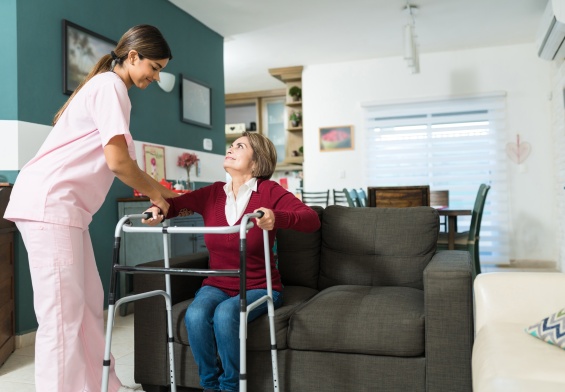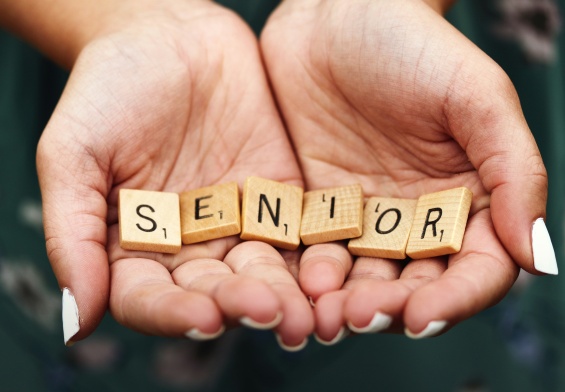The vibrant promotional materials for up-and-coming senior living societies in New Jersey present lively retirees relishing games of pickleball and socializing with companions in their high-end dining facilities. Yet, the reality is drastically different for the aging middle class, who find affording the necessary care to be a significant hurdle.
Scholars refer to this demographic as “the overlooked middle.”
These individuals have too much wealth to be eligible for government aid programs that fund long-term care, either in their homes or in an institution. Yet, their savings, pension, and Social Security incomes fall short of covering their own care expenses.
In suburban New Jersey, these individuals often find themselves in a paradox of being property-rich but cash-poor. More than half of retired New Jersey seniors (52%) lacked enough income in 2019 to meet their basic monthly expenses and stay in their communities as they aged without relying on public assistance, gifts or loans, a state analysis found.
New Jersey- Highest Elder Care Costs in the Country
Costs in New Jersey for all levels of care are among the highest in the nation. Supply and demand are moving in the opposite direction. And it is even more difficult for minorities, especially African Americans, who are overrepresented in nursing homes and underrepresented in pricier assisted-living facilities.
“None of this is cheap,” said Cathy Rowe, CEO of New Jersey Advocates for Aging Well. “If you can afford it, it’s not a concern. If you qualify for Medicaid or other assistance, you have that covered. It is the bulk of people in the middle who are struggling with this.” This causes family members to have to fill the void. A spouse, often with health problems of their own, becomes the primary caregiver. Or a son or daughter or daughter-in-law (it’s usually a woman) takes on the responsibility.
Nearly 1.1 million New Jersey residents – 100,000 of them in Bergen County – provide more than 900 million hours of direct, unpaid care to an elderly or disabled relative or friend each year, according to the New Jersey State Strategic Plan on Aging. The economic value of that unpaid care totals nearly $13 billion.
Potential Policy Interventions
The financial pressure faced by the middle-class elderly population is not just a personal concern but also a societal issue. Experts believe that policymakers should focus on the following key areas:
- Transportation: Implement strategies that will facilitate elderly people’s access to medical appointments, social events, and shopping centers when driving is no longer an option for them.
- Zoning and Housing: Incentivize the development of affordable apartments or even smaller homes, known as accessory dwelling units. These could enable older adults to live independently while still being in proximity to their children.
- Compensation and Incentives for Direct-Care Professionals: Enhance the wages and rewards for direct-care workers to expand the pool of home health employees and staffing at nursing homes and assisted-living facilities.
- Support for Family Caregivers: These individuals often have to leave their jobs or cut down their working hours, thereby losing income and retirement savings. Policies must be established to support them.
An impending elder care crisis is on the horizon due to converging trends
Baby boomers are now in their 60s and 70s, and they anticipate a longer life expectancy than their parents. As they continue to age, their health requirements will increase. One in four will need mobility assistance, and a smaller but increasing number will face cognitive challenges like dementia.
However, many haven’t adequately saved for retirement. They are less likely than their parents to have pension plans with defined monthly benefits. Moreover, nearly 20% have already withdrawn from their retirement savings accounts. Survey data shows that over a third of baby boomers anticipate Social Security to be their main source of income. However, in New Jersey, the average annual Social Security income falls between $21,000 and $23,000, a mere fraction of the cost of living in the state.
Family structures have also shifted. Families are now smaller, and adult children are often geographically distant and employed. The majority of elderly individuals live alone or with their spouse instead of in multi-generational homes. This shift means that people living alone are more likely to require the services of a home caregiver.
Federal government estimates suggest that nearly 70% of today’s 65-year-olds will require long-term care services at some stage. Given their extended life expectancy, women can anticipate an average requirement of 3.7 years of assistance, while men will need about 2.2 years on average. Approximately one-fifth will require services and support for over five years.
Many elderly individuals and their families have become accustomed to Medicare addressing most of their medical requirements in retirement. However, this government insurance plan does not cover long-term care services – a stark reality families confront when seeking care.
Elizabeth Davis, the executive director of The Bright Side Family, a nonprofit for senior services based in Teaneck, noted, “If you’re wealthy in this state, there are a lot of resources you can access. However, if you’re of middle or low income, the situation becomes extremely challenging.”
Lack of savings is becoming an elder care crisis
The New Jersey Division of Aging Services’ analysis indicates that those living alone, single women more so than single men, renters more than homeowners, and homeowners with mortgages rather than those mortgage-free, are more likely to face economic insecurity.
Bergen County was identified as the most costly county for senior retirees carrying a mortgage. In 2019, an elderly couple with a mortgage in Bergen County needed an annual income of $57,288 to cover their fundamental needs, including housing, food, Medicare premiums, health-related out-of-pocket costs, and personal, household, and transportation expenses. With the near extinction of private-sector pensions, financial advisors strongly recommend saving for retirement from an early age to maximize the benefits of interest and market returns. If a job doesn’t provide a 401(k) plan, it is advisable to set up and invest in an IRA.
Sliding into poverty during old age
A report from New Jersey titled “Living Below the Line,” discovered high levels of economic insecurity among seniors across all racial and ethnic groups. However, the situation was particularly acute for households led by retired seniors of color.
Jean Dorsey, an African American, found herself with limited choices when her brother required more assistance than she and her siblings could provide. Her brother, 74, had retired from a position at a Paterson paint factory and was battling diabetes and kidney issues that necessitated dialysis. Like many seniors with minimal savings, he quickly transitioned from a middle-class lifestyle to a low-income bracket within a few years, a phenomenon commonly referred to as “aging into poverty.” His Social Security benefits were insufficient to meet his basic needs, including the rent for his apartment in Ridgewood.
Jean expressed, “Our main concern is that he could end up in a facility where he would be treated as inferior due to his current low-income status. Sadly, there are few favorable options available in this country for seniors in his situation.”
Minorities facing greater hurdles with elder care
The situation presents even steeper challenges for minority groups in New Jersey.
Assisted living facilities have predominantly catered to white families, as they typically have larger retirement savings and income. According to a state study, minority groups earn lower median wages, are more likely to work in positions without retirement plans, accumulate less retirement savings, and receive smaller Social Security benefits. Additionally, fewer minority seniors own homes, which often serves as a substantial asset to fund care. As of 2018, 45% of retired Black seniors and 58% of retired Hispanic seniors in the state were renters, compared to just 17% of retired white seniors.
Jean Dorsey has found some solace in her brother’s current situation. Despite the challenges, he is flourishing. He’s a regular victor at Trivia Night, participates in current events discussions, and assists in gardening. The facility’s staff ensures that he attends his doctor’s appointments and receives his dialysis treatments.
Although this is a step in the right direction, there is still much to be remedied when it comes to New Jersey seniors receiving the elder care they both need and deserve.




